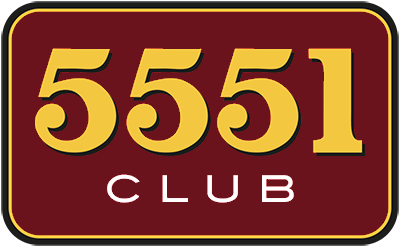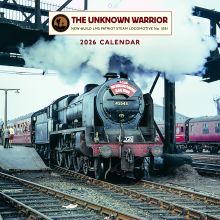2020 is the 100th Anniversary of the repatriation and burial of The Unknown Warrior in Westminster Abbey
The grave of the Unknown Warrior lies at the west end of the Nave of Westminster Abbey in London. It symbolises all those who died during the Great War whose body or grave could not be identified and may be from any of the three services, Army, Navy or Air Force, and from any part of the British Isles, Dominions or Colonies and represents all those who died who have no other memorial or known grave. The face of the Unknown Warrior will rightly never be known. He represents the son of every mother, the husband of every wife, the brother of every sister. A permanent memorial for all those who fell during the Great War of 1914-1918.
The idea for such a burial came about in 1916 when the Reverend David Railton, an Army Chaplain who was serving on the Western Front, came across a grave in a back garden at Armentières marked by a rough cross, which bore the pencil-written legend ‘An Unknown British Soldier’. After hostilities ended, he wrote to the Dean of Westminster, Herbert Ryle with the suggestion that the remains of an unidentifiable serviceman be buried in Westminster Abbey as the representative of the thousands of soldiers who had died in the Great war.
The Dean of Westminster embraced the idea and approached both Buckingham Palace and 10 Downing Street. Prime Minister David Lloyd George received it enthusiastically because it fitted so well with his own vision of a ‘national memorial’. This memorial became known as the Cenotaph.
On Sunday, 7th November 1920, four individual parties of soldiers were sent out to the four principal battlefields – Somme, Ainse, Arras and Ypres – to exhume the bodies of four British soldiers. They were identified as British by their boots and buttons but their ranks were unknown. The remains were brought to the chapel at St. Pol. The General Officer in charge of troops in France and Flanders, Brigadier General L.J. Wyatt, with Colonel Gell, went into the chapel alone where the bodies on stretchers were covered by Union Flags. The General, who had no idea from which area they had come, selected one and the two officers placed it in a plain coffin and sealed it. The other three bodies were reburied.
The next morning Chaplains of the Church of England, the Roman Catholic Church and non-Conformist churches conducted a service in the chapel before the body was escorted to the port of Boulogne to rest overnight. The coffin shell containing the Unknown Warrior was placed in a coffin of English oak which had grown in Hampton Court Palace garden.
The coffin plate bore the inscription:
"A British Warrior who fell in the Great War 1914-1918 for King and Country".
The coffin plate, ironwork banding for the coffin and handles were designed and made by D.J. Williams of the Brunswick Ironworks at Caernarfon in Wales.
On the 10th November 1920, the coffin was transported from Boulogne to Dover by the Royal Navy destroyer HMS Verdun. It was then placed in the 'Cavell van', a parcels van built by South Eastern and Chatham Railway that had been previously used to carry the bodies of nurse Edith Cavell and then Captain Charles Fryatt following their executions in 1919. The Unknown Warrior was taken by train from Dover Marine station to Victoria station in London arriving at 8.32 pm on platform 8 where it rested overnight.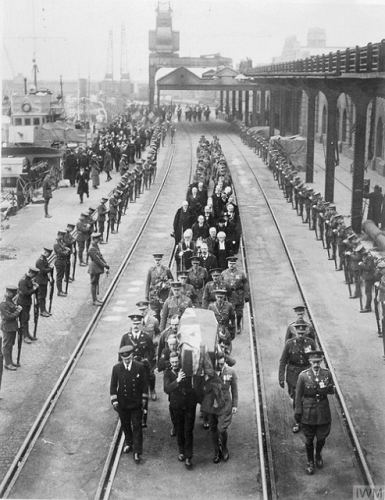
"The train thundered through the dark, wet, moonless night. At the platforms by which it rushed could be seen groups of women watching and silent, many dressed in deep mourning. Many an upper window was open and against the golden square of light was silhouetted clear cut and black the head and shoulders of some faithful watcher.
.... In the London suburbs there were scores of homes with back doors flung wide, light flooding out and in the garden figures of men women and children gazing at the great lighted train rushing past".
(from the Daily Mail, 11th November 1920)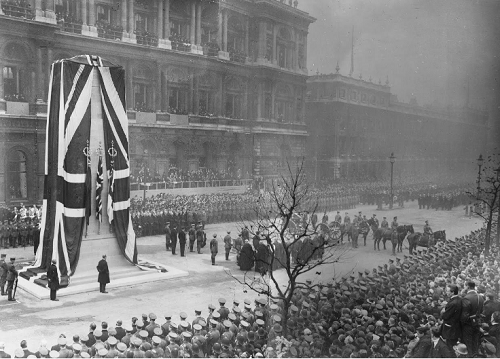
On the morning of 11th November 1920, the second anniversary of the Armistice, the coffin of the Unknown Warrior was draped with the Union Flag that Reverend Railton had used for his battlefield services in France. The horse-drawn gun carriage carrying the coffin was then carried through the silent London crowds to the Cenotaph on Whitehall, which had been designed by Sir Edwin Lutyens as the new national war memorial. King George V laid a wreath of red roses and bay leaves on the coffin, and then unveiled the Cenotaph. On the first stroke of the eleventh hour from Big Ben, the capital was hushed into silence for two minutes. The King then walked with the cortège behind the coffin, with other members of the Royal Family and ministers of state to Westminster Abbey, observed by huge silent crowds. The Unknown Warrior entered the Abbey through a ceremonial guard formed mainly by recipients of the Victoria Cross. Guests of honour inside the Abbey were a group of about one hundred women. They had been chosen because they had each lost their husband and all their sons in the war. A service with hymns in the Abbey then followed and The Unknown Warrior was buried at the west end of the nave and the grave filled with soil brought from the battlefields of France. 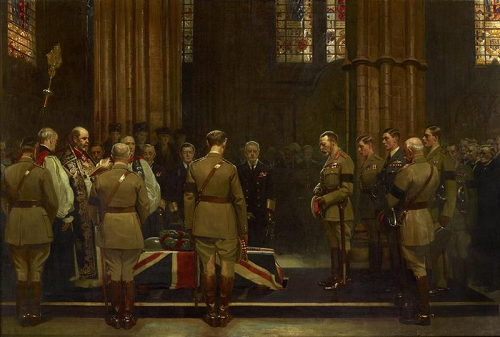
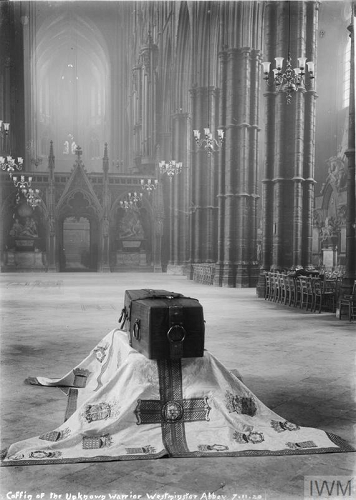
The grave was covered by an engraved stone with a gilded inscription:
A BRITISH WARRIOR WHO FELL IN THE GREAT WAR 1914-1918 FOR KING AND COUNTRY. GREATER LOVE HATH NO MAN THAN THIS.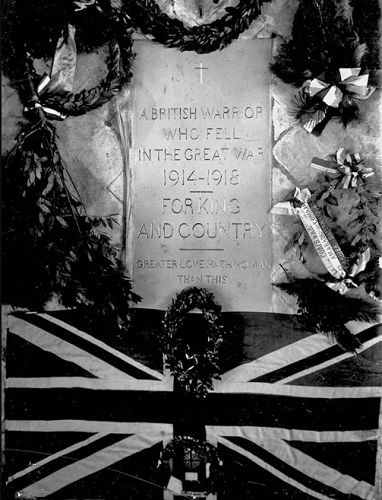
In the week after the burial, it is estimated that over one million people visited the Abbey to pay their respect.
A year later on 11th November 1921, the present black marble stone was unveiled at a special service, replacing the original engraved stone in Westminster Abbey. The new stone measured 7 feet by 4 feet 3 inches and had depth of 6 inches. The brass inscription was made from melted-down wartime ammunition.
The inscription, composed by Herbert Ryle, Dean of Westminster, reads:
BENEATH THIS STONE RESTS THE BODY
OF A BRITISH WARRIOR
UNKNOWN BY NAME OR RANK
BROUGHT FROM FRANCE TO LIE AMONG
THE MOST ILLUSTRIOUS OF THE LAND
AND BURIED HERE ON ARMISTICE DAY
11 NOV: 1920, IN THE PRESENCE OF
HIS MAJESTY KING GEORGE V
HIS MINISTERS OF STATE
THE CHIEFS OF HIS FORCES
AND A VAST CONCOURSE OF THE NATION
THUS ARE COMMEMORATED THE MANY
MULTITUDES WHO DURING THE GREAT
WAR OF 1914-1918 GAVE THE MOST THAT
MAN CAN GIVE LIFE ITSELF
FOR GOD
FOR KING AND COUNTRY
FOR LOVED ONES HOME AND EMPIRE
FOR THE SACRED CAUSE OF JUSTICE AND
THE FREEDOM OF THE WORLD
THEY BURIED HIM AMONG THE KINGS BECAUSE HE
HAD DONE GOOD TOWARD GOD AND TOWARD
HIS HOUSE.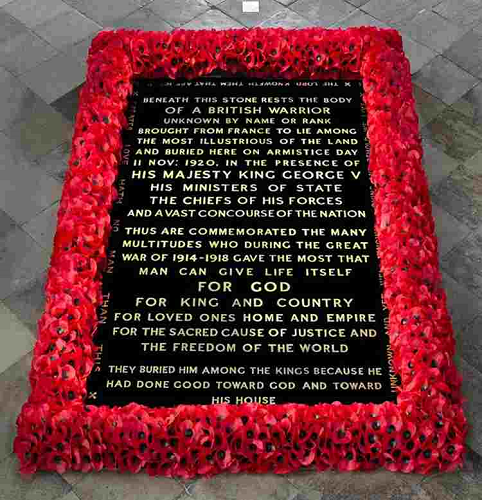
It is the only tombstone within Westminster Abbey on which it is forbidden to walk.
Reverend David Railton carried his Union Flag to the altar in Westminster Abbey where it was dedicated to, and then laid up over, the Tomb of the Unknown Warrior. It is now hung in nearby St George’s Chapel and can still be seen to this day. The ship's bell from HMS Verdun was presented to Westminster Abbey and now hangs near the grave.
The Duke of York, who was later crowned King George VI, married Lady Elizabeth Bowes Lyon in the Abbey in 1923. After the wedding ceremony, Elizabeth laid her wedding bouquet on the Tomb of the Unknown Warrior upon leaving the Abbey. This was a mark of respect for her brother who had been killed in 1915 at the Battle of Loos.
The tradition has been continued by royal brides who married in the Abbey and who have sent back their bouquets to be laid on the grave. Royal brides who were married elsewhere have also sent their bouquets back to the Abbey. HRH Princess Beatrice of York who was married in the Royal Chapel of All Saints at Royal Lodge, Windsor this year, was the last royal bride to send her bouquet to rest on the Tomb of the Unknown Warrior.
100 years after the burial, the Tomb of the Unknown Warrior remains one of the most visited war graves in the world. The steam locomotive 'The Unknown Warrior' as the new national memorial engine, will continue to commemorate the fallen wherever it is seen.
Written by Andrew Laws.


